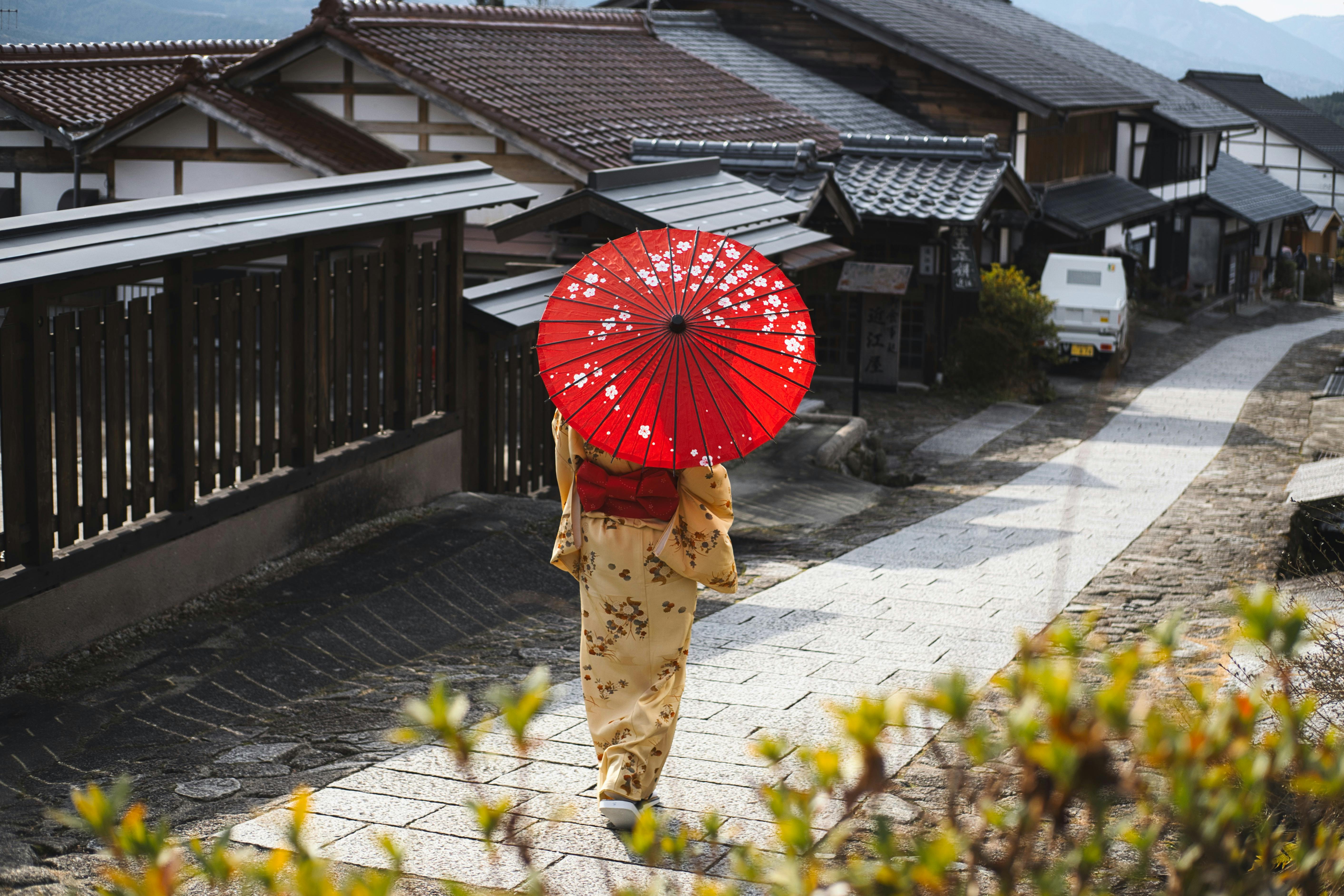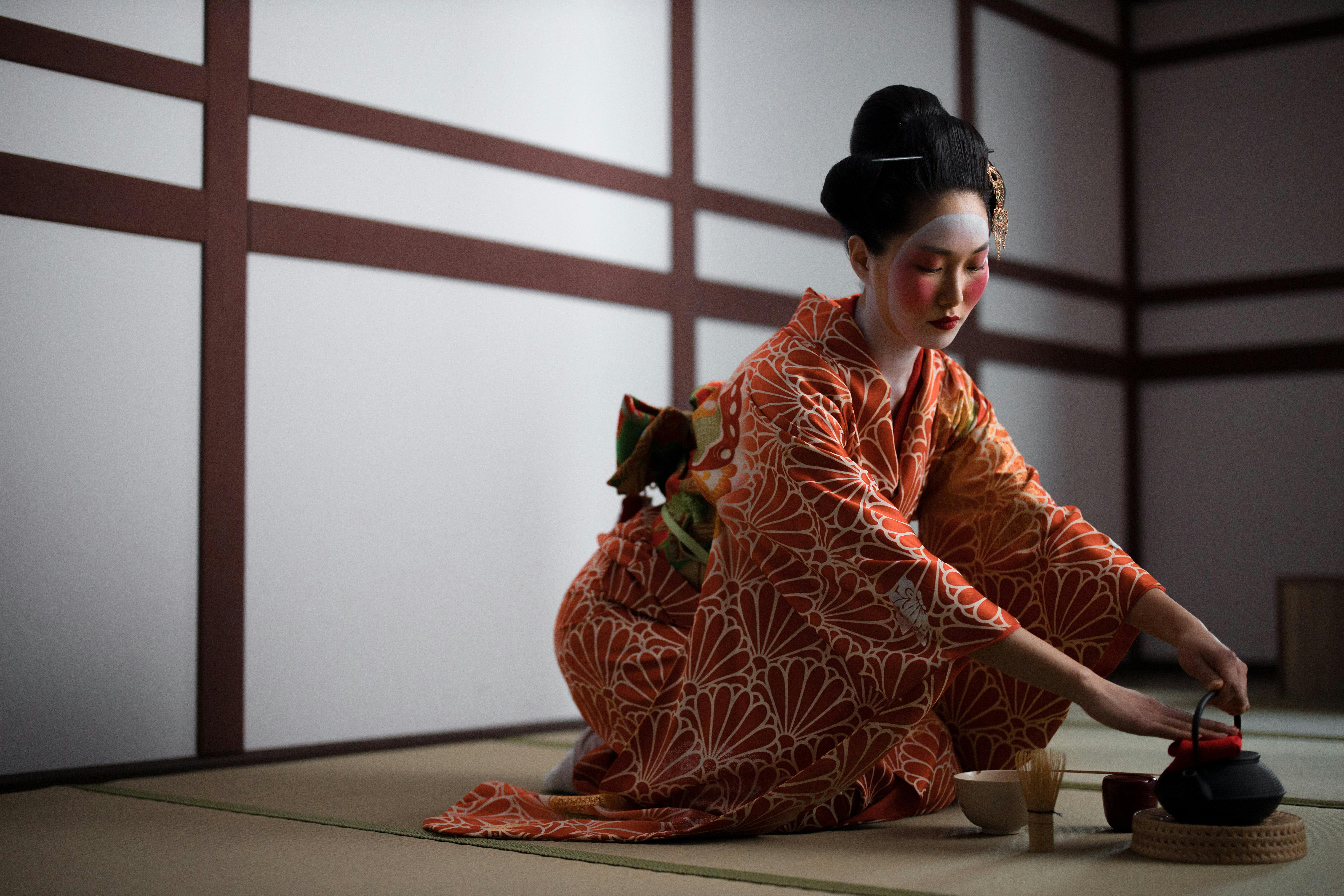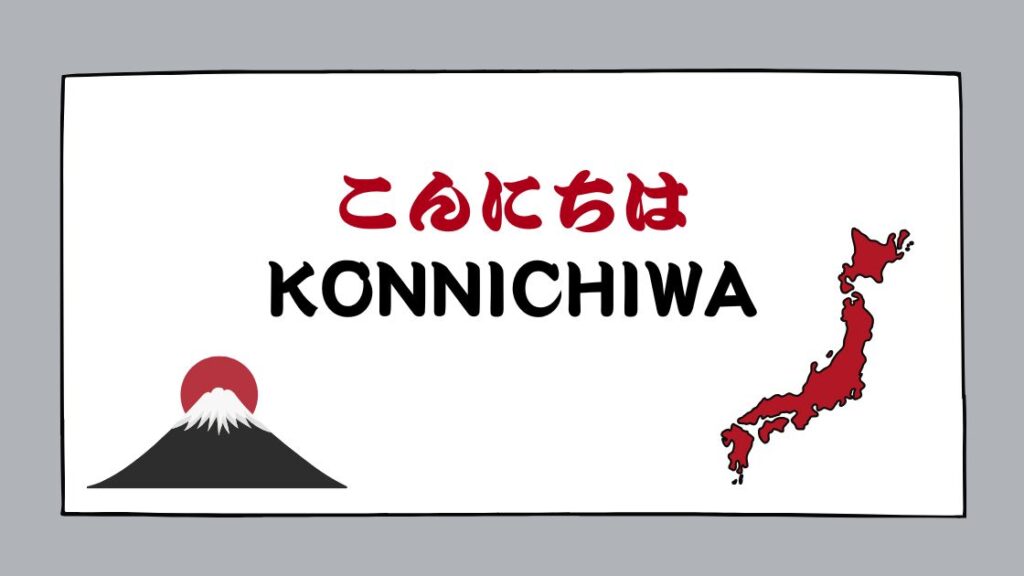Learning how to say “hi” in Japanese opens the door to more than just simple greetings—it offers a glimpse into a culture that values politeness, respect, and context. In Japanese, how you greet someone changes depending on the time of day, the level of formality, and your relationship with the person. Whether you’re saying a casual “Yaa!” to a friend or a polite “Konnichiwa” in a formal setting, each word carries meaning. This post will guide you through the essential ways to say hi in Japanese to navigate social interactions confidently and respectfully.
The Basics of Saying Hi in Japanese
Understanding how to say “hi” in Japanese is about more than just words. It’s about respecting the culture and knowing the right greeting for the right time of day or situation. Here’s a breakdown of some commonly used greetings:
Konnichiwa (こんにちは) – The Versatile Hello
 Photo by Evgeny Tchebotarev
Photo by Evgeny Tchebotarev
Konnichiwa is likely the first Japanese greeting you’ll encounter, and for a good reason—it’s a universal way to say “hello” throughout the day. From late morning until the early evening, Konnichiwa fits almost any situation. It’s polite, neutral, and works whether you’re meeting a friend or chatting with a colleague.
But here’s the catch: Konnichiwa carries a bit of formality. So, while perfect for daily use, it might feel a little stiff for close friends. Think of it as the equivalent of saying “good afternoon” in English—it’s friendly and professional but not overly casual.
For more background on this widely-used greeting, check out this helpful resource that dives deeper into Japanese greetings.
Ohayou (おはよう) and Ohayou Gozaimasu (おはようございます) – Saying Good Morning
Morning greetings in Japanese are all about context. “Ohayou” (informal) and “Ohayou Gozaimasu” (formal) both mean “good morning,” but knowing when to use each can save you from awkward moments.
- Ohayou (おはよう): Use this with family, friends, or anyone you’re close to. It’s casual and warm, ideal for a relaxed setting.
- Ohayou Gozaimasu (おはようございます): Add “gozaimasu” for a polite touch. Use this when speaking to teachers, bosses, or strangers. It shows respect and signals you’re mindful of proper etiquette.
A general rule? If you’re unsure, stick with “Ohayou Gozaimasu.” It’s better to be too polite than to come off as overly casual. For more tips on greetings based on formality, this guide might help.
Konbanwa (こんばんは) – Greeting in the Evening
As the sun sets, the greeting shifts to “Konbanwa.” This translates to “good evening” and is used in situations that require politeness. Whether you’re arriving at a dinner party, meeting someone after work, or simply greeting a neighbor, “Konbanwa” is a respectful and appropriate choice.
While “Konbanwa” works in formal and semi-formal settings, it’s also flexible enough to use with friends. It’s charming yet relaxed, like saying “good evening” in English.
If you’d like a deeper understanding of evening and nighttime greetings, this post on basic Japanese greetings breaks it down clearly.
In Japanese culture, greetings aren’t just words—they’re a reflection of care and thoughtfulness. Mastering when to use each one is a small step with a big impact, helping you connect meaningfully wherever you go.
Casual Ways to Say Hi in Japanese
Japanese culture has a deep-rooted connection to formality, but that doesn’t mean there’s no room for casual or playful interactions! Let’s explore some relaxed ways to say “hi” in Japanese, perfect for informal settings, friendships, or even answering a call.
Yo (よ) and Yaa (やあ) – Casual and Friendly Hi
 Photo by Thirdman.
Photo by Thirdman.
When you’re looking for a simple, laid-back way to greet a friend in Japanese, “Yo” (よ) and “Yaa” (やあ) might be your go-to phrases. These are as informal as it gets and are used much like “Hey” or “Hi” in English. They’re short, sweet, and ideal for use among close friends or family members.
- When to use them: Picture running into a schoolmate in the hallway or texting someone casually. You’d say, “Yo!” to grab their attention or make your greeting feel friendly and approachable.
- Tone: These greetings carry a fun, relaxed vibe. But keep in mind—they are usually not suitable for formal environments, like speaking to elders or work colleagues. Remember, tone and relationship are everything in Japanese!
For more casual Japanese greetings, take a look at this guide on everyday phrases.
Yahoo (ヤッホー) and Ossu (おっす) – Trendy and Gender-Specific Greetings
The youthful vibe of certain Japanese greetings is undeniable, especially with playful terms like “Yahoo” (ヤッホー) and “Ossu” (おっす).
- Yahoo (ヤッホー): This greeting isn’t just a tech brand—it’s a chirpy way for younger people, especially women, to greet close friends. Imagine shouting “Yahoo!” across a park to call out to your crew—it’s filled with energy and excitement!
- Ossu (おっす): While “Yahoo” tends to lean more feminine, “Ossu” is rooted in traditional masculinity and informal camaraderie. Common among male acquaintances, it can often be heard in sports circles and among colleagues with a buddy-like bond. Think of it like bro slang, a cool and hearty “Yo! What’s up?”
Whether you’re a fan of lively expressions or cool casual slang, both Yahoo and Ossu reflect different vibes. Learn more about these casual greetings in this resource on Japanese greetings.
Moshi Moshi (もしもし) – Answering the Phone
As unique as languages can get, there’s no casual “Yo!” when you pick up the phone in Japanese. Instead, you’ll use the distinct and polite phrase “Moshi Moshi” (もしもし).
- Why “Moshi Moshi”? This classic phone greeting is derived from a more formal phrase (“Moushiagemasu”), which means “I speak.” Over time, it became shortened for convenience. But here’s the twist—it’s almost never used outside phone conversations.
- When and how to use: Imagine receiving a call from a friend; you’d answer with “Moshi Moshi” to signify you’re ready to speak. However, it’s important to note that this isn’t used in face-to-face communication. It’s strictly a phone thing!
Want to dive deeper into why this phrase is so iconic? Check out this post for more context on its origins and use.
Whether you’re greeting someone in person or picking up a phone call, casual Japanese greetings are as vibrant and varied as the culture they come from. Next time you’re chatting with friends, try throwing in a “Yo” or “Yaa” to keep things light and fun.
Formal Greetings in Japanese
Learning formal greetings in Japanese is more than just memorizing words. It’s about showing respect and understanding cultural nuances. These greetings are essential in professional, polite, and new social situations.
Hajimemashite (はじめまして) – Nice to Meet You
When meeting someone for the first time, Hajimemashite is your go-to greeting. It essentially means “Nice to meet you,” and is often the first step in a formal introduction.
After saying Hajimemashite, it’s customary to follow with your name and a polite phrase such as “Yoroshiku onegaishimasu” (よろしくお願いします), which loosely translates to “Please take care of me” or “I look forward to working with you.” This expression fosters a sense of respect and goodwill right from the start.
Imagine you’re at a formal business gathering in Japan. You’d say, “Hajimemashite, [Your Name] desu. Yoroshiku onegaishimasu.” It’s a structured and polite way to break the ice.
For an even deeper dive into greetings, this guide to Japanese greetings explains their contexts and cultural importance.
Ogenki Desu Ka? (お元気ですか?) – How Are You?
This phrase is a polite way to ask how someone is doing. Ogenki desu ka? translates to “Are you well?” and is often used in formal or semi-formal settings.
If you’re speaking to someone you’ve just met or someone in a professional relationship, starting with Ogenki desu ka? shows concern for their well-being. It’s equivalent to asking “How are you?” in English but conveys a greater level of politeness.
- How to respond: If someone asks you, “Ogenki desu ka?” a standard response would be “Hai, genki desu” (はい、元気です), which means “Yes, I am well.” Adding “Anata wa?” (あなたは?) turns the question back to them.
Whether you’re navigating formal interactions or just seeking to connect, this phrase creates a respectful and caring tone.
Otsukaresama Desu (お疲れ様です) – Workplace Greeting
In professional settings, Otsukaresama desu plays a unique and important role. Literally translated, it means “You must be tired,” but it’s used to show appreciation for someone’s efforts. In English, this is akin to saying, “Good work!” or “Thank you for your hard work.”
This phrase is usually spoken when seeing colleagues during the day, leaving the office, or acknowledging someone’s dedication. Think of it as a blend of gratitude and camaraderie. For instance:
- When entering the office: Saying Otsukaresama desu to coworkers as a greeting is a sign of respect.
- When leaving the office: You can also use Otsukaresama desu to say goodbye.

Photo by cottonbro studio.
This phrase beautifully reflects Japanese workplace culture, emphasizing mutual respect and teamwork. To learn more about Japanese manners in professional settings, check out this guide to greetings and etiquette.
These formal greetings are not just words—they reflect Japan’s deep cultural values of courtesy and connection. Including them in your vocabulary will make your interactions richer and more meaningful.
Context-Specific Greetings in Japan
Japanese greetings vary by context and relationship, reflecting the rich nuances of the culture. Each phrase serves a specific purpose and encapsulates traditional values of respect and hospitality within daily interactions. Here, we’ll explore a few context-specific greetings that illustrate how integral they are in various situations.
Irasshaimase (いらっしゃいませ) – Welcoming Customers
When you step into a shop or restaurant in Japan, you’re often greeted with a cheerful “Irasshaimase!” This phrase translates to “Welcome” and is more than just a nice greeting; it’s a vital part of the customer service experience.
- Why do they use it? Think of it as a warm invitation. It shows that the staff acknowledges your presence and values you as a customer. The phrase adds a personal touch that can make the experience feel special.
- Where is it used? Whether you’re entering a cozy ramen shop or a high-end boutique, you’ll hear this phrase. It establishes a friendly atmosphere and signifies the staff’s readiness to assist.
If you’re curious about the significance of greetings like Irasshaimase in Japanese culture, check out this guide on etiquette in Japan.
Tadaima (ただいま) and Okaeri (おかえり) – Coming Home
The exchange of “Tadaima” and “Okaeri” is a heartwarming example of Japanese hospitality and family connection.
- What do they mean? Tadaima means “I’m home,” while Okaeri translates to “Welcome back.” This exchange occurs when someone returns home, expressing both presence and warmth.
- Why is it important? It’s a moment of recognition and acknowledgment, offering a sense of belonging. Consider it similar to an embrace in verbal form; it reassures both the returnee and the welcomer that they are part of a close-knit environment.
For further insight into these heartfelt greetings, you can read more about them in this article on Japanese greetings.
Ojamashimasu (おじゃまします) – Entering Someone’s Home
Before stepping inside someone else’s home, saying “Ojamashimasu” is a sign of respect in Japanese culture. This phrase means “Sorry for the intrusion” and highlights gratitude for being allowed in.
- How is it used? It’s essential to say this when entering, acknowledging that you are entering their private space. It sets a respectful tone and shows that you value their hospitality.
- What follows? Once you’re inside, it’s common to hear “Okaeri” from the host, creating a warm and welcoming dynamic.
Using Ojamashimasu can elevate your courtesy during visits, showcasing your understanding of Japanese customs.
In short, these context-specific greetings add depth to interpersonal communication in Japan. By using these simple phrases correctly, you can enhance your social interactions and show respect for the culture. Each greeting not only conveys words but also embodies values of hospitality, respect, and familial bonds that the Japanese hold dear.
Tips for Mastering Japanese Greetings
Understanding how to greet someone in Japanese is essential. The right greeting sets the tone of your interaction and shows respect for Japanese culture. Here are some key tips to help you master Japanese greetings effectively.
Understand the Context
The situation greatly influences how you greet someone in Japanese. Understanding context helps you choose the appropriate greeting and prevents missteps.
- Time of Day: Different greetings suit different times. For instance, “Ohayou” is used in the morning, while “Konnichiwa” is great for afternoons.
- Setting: Formal or casual settings dictate greeting styles. In a business meeting, “Hajimemashite” is more fitting than a casual “Yo.”
- Relationship: Knowing your relationship with the person is crucial. You’d use a different greeting for a friend compared to a new colleague.
Using the right greeting based on context not only enhances communication but also reflects your understanding of Japanese customs. For more about situational greetings, check out this guide.
Be Mindful of Formality Levels
Formal greetings play a vital role in Japanese communication. Adjusting your greeting based on the level of formality is crucial for demonstrating respect.
- Formal Situations: When speaking with elders or in a workplace, use formal greetings like “Ohayou Gozaimasu” (Good morning) or “Konnichiwa” (Hello). This shows politeness.
- Informal Situations: With close friends, you can be more relaxed. Greetings like “Yaa!” or “Yo!” are appropriate.
- Hierarchy Matters: In Japan, hierarchy is important. Use more formal greetings with someone of higher status or when introducing yourself to someone new.
Navigating formality levels can be tricky, but it’s important for building positive relationships in Japan. For more insights on formal greetings, visit this resource.
Practice and Listen to Native Speakers
One of the best ways to learn greetings is by practicing and listening to native speakers.
- Observation: Pay attention to how locals greet each other. Notice their tone, body language, and the context of their greetings.
- Listening Resources: Use language apps or online platforms to expose yourself to authentic Japanese conversations.
- Practice Speaking: Role-play with a language partner or tutor to practice different greetings. It reinforces your learning and boosts your confidence.
Listening and speaking with native speakers helps you grasp the cultural nuances behind greetings. For additional tips on mastering greetings, check out this cultural guide.

Photo by RDNE Stock project.
These tips will help you become more comfortable and effective at using Japanese greetings. By mastering the art of greeting, you not only improve your communication skills but also deepen your understanding of Japanese culture.
How to Say Hi in Japanese? Conclusion
Mastering how to say hi in Japanese is essential for anyone looking to connect with the culture and its people. Japanese greetings reflect values of respect, politeness, and social awareness, showcasing the importance of context in communication.
By understanding when to use phrases like Konnichiwa, Ohayou Gozaimasu, or even casual greetings like Yo, you can enhance your interactions. This knowledge not only helps in making meaningful connections but also demonstrates your effort to appreciate Japanese customs.
So next time you meet someone new or greet a friend, remember how your choice of greeting can impact the conversation. How will you incorporate these greetings into your interactions in the future? Your journey to understanding Japanese culture begins with these simple yet vital phrases. Thank you for exploring this topic, and feel free to share your thoughts!


